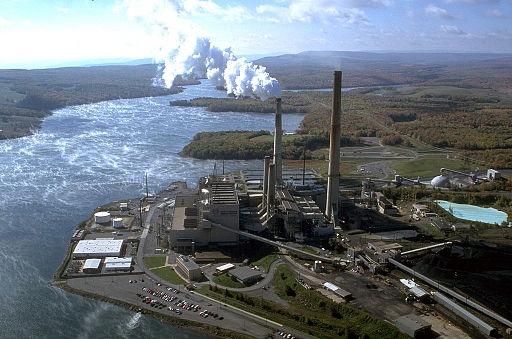Influence Analytics: What is the Utility Air Regulatory Group, which opposes Obama’s Clean Power Plan?

Dig deeply among the 1.3 million comments the U.S. Environmental Protection Agency (EPA) received on its proposal to mandate a 30 percent reduction in carbon emissions from power plants by 2030, and you will find a lengthy missive from an organization with a distinctly ambiguous name: the Utility Air Regulatory Group.
Comments on President Barack Obama’s so-called “Clean Power Plan” were due this week, and while many of them came in the form of batches of similarly worded letters organized by environmental organizations, this group was markedly different — though it takes some digging to nail down how and why.
The ten-page letter, available here on Docket Wrench, starts by requesting that the “EPA withdraw its proposed rules…” and concludes that the “EPA’s actions violate clear statutory requirements defining the limitations on EPA’s authority.” Nowhere does the letter name members of the group, whose earlier challenge of Clean Air Act rules made it all the way to the Supreme Court. Docket Wrench also shows two other recent comments filed by the Utility Air Regulatory Group, one a comment on another aspect of the Clean Power Plan complete with a lengthy list of attachments, the other an appeal for the EPA to delay the comment period on that proposal.
One of these comments describes the group as a “voluntary, ad hoc, not-for-profit association of individual electric generating companies and industry and industry trade associations.”
A request to the attorney who signed the letter, Henry V. Nickel, of the law and lobbying firm Hunton and Williams, to provide a current list of the members has yet to be returned. However, in 2006, as part of a comment letter, the group did provide such a list. It includes big power industry players from the Edison Electric Institute, the trade association representing electric utilities, to Southern Company to Dominion Energy. (For the full list, click here.)
Nickel is not currently registered as a lobbyist, although in 1999 he reported he was lobbying for the Clean Air Regulatory Group, according to Influence Explorer. The firm’s official website, however, discusses how its air practice “represent groups of clients (including the Utility Air Regulatory Group) collectively in rulemakings and litigation under the Act on matters involving a wide range of public policy, regulatory, and administrative law issues.” And seven firm members are registered as lobbyists for such companies as Koch Industries, FirstEnergy and Southern Company. Among the issues they work on are “climate and energy legislation,” and EPA is listed as one of the agencies lobbied, as shown in this disclosure form filed on the Southern Company account.
The congressional piece is also important: a bill introduced in June by Rep. David McKinley, R-W.Va. The measure, which has gathered 81 co-sponsors, would eliminate the proposed EPA rules. While such legislation would not make it past a presidential veto, having a live bill is a way to garner attention and support for the opposition. McKinley’s top donor list includes a number of energy companies, such as Arch Coal and Murray Energy.
The example of the Utility Air Regulatory Group shows how, despite lobbying disclosure laws, it remains difficult to ascertain who is lobbying for what: Attorneys who do regulatory work are not necessarily required to register to lobby and companies and trade associations will often band together to form ad hoc coalitions whose funding and activities can be difficult to trace.
Of course the EPA heard from many other parties other than the Utility Regulatory Air Group — more than a million, in fact — but this is the group that is likely to be at the center of any future legal challenges to the new rules.
While the EPA posted the text for just a small portion of the comments received (21,000 out of the 1.3 million), most of the comments likely represent bulk letter-writing campaigns organized by environmental groups. For example, the language in this Sierra Club alert is nearly identical to some 345 letters submitted to the EPA, according to Docket Wrench. PennEnvironment takes direct credit for 35,000 comments. The NRDC claims 8 million comments have been filed in favor of clean air rules over the past three years, covering more proposals than the current ones.
—–
More reading on lobbying around Obama’s proposed Clean Power Plan:
- Our July explainer on EPA’s proposals and how to follow them using Sunlight tools.
- A look at federal bills and other markers of the lobbying fight around clean air proposals.

